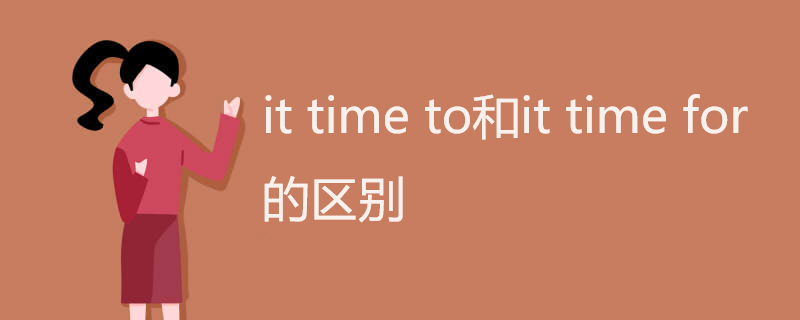-
-
it time to和it time for两者都可以用来表示“到了做某事的时间了”,但是侧重点不同。it's time to后接动词原形,强调的是动作的执行,表示“到了做某事的时候了”;而it's time for后接名词、代词、动名词作宾语,强调的是动名词的动作,表示“到了做某事的时间了”。

it time to和it time for的区别是什么
一、后接词不同
1.it's time for后面一般接某人(某部门或机构)+to do sth, 也可以直接加sth.
2.it's time to后面接动词原形。
二、后缀词用法不同
1.for往往含有“向前方的目标运动”的意思。
2.to则含有“向最终目标运动”的意思。
三、强调的意思不同
1.it is time for强调的是:是时候做某事了,重在事情,后面要跟名词(n.)或者动名词(也就是动词+ing=v.-ing)如:
It's time for the children to sleep. 孩子该睡觉了。
2.it is time to强调的是:是时候做...了,重在动作,后面跟动词(原型v.)或动词短语。如:
He says it is time to look for solutions.他表示,现在正是寻找解决方案的时候
time的相关句型整理
1、It's time for sth . 或 It’s time ( for sb . ) to do sth. 意为:该是……的时候了
This is the time when sb . should do sth . 或The time has come when sb . should do sth . 这两个句型也用来表示“该是……的时候了”,when 引导的定语从句用陈述语气或“should + 动词原形”的形式。例如:This is the time when you should get up .是你该起床的时候了。
2、It's time that...中,that从句中的谓语动词用过去时或用"should+动词原形"(should不能省略)。
It's time we started.(It's time we should start.)
3、This is the first ( second , last ) time ( that ) sb . has done sth. 意为:是某人第几次……。
This is the third time I have been to Beijing . 这是我第三次去北京了。